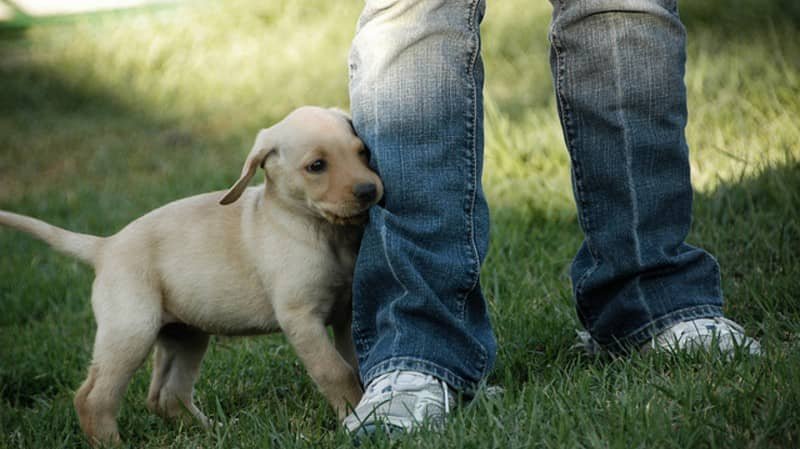Bite inhibition training is a type of dog training that is designed to teach a dog how to control the force of its bite. The goal is to help a dog learn appropriate levels of pressure when interacting with humans and other animals, which can prevent painful or damaging bites in the future.
This form of training is especially important for puppies, as they will naturally chew and bite as part of exploring their environment. By teaching them proper bite inhibition, owners can help ensure that their puppy grows up to be a well-mannered and gentle dog.
Bite inhibition is an important part of any puppy’s life and should be done as soon as possible, even before they leave their respective dog breeders.
It should not be confused with similar types of training such as discipline or obedience training, which focus on teaching specific behaviours rather than controlling the strength of your dog’s bite.
Bite inhibition focuses on teaching your dog to use gentle pressure when interacting with people or other animals, which prevents them from biting too hard. This can be especially useful for more aggressive dog breeds such as Staffordshire Bull Terriers and Chow Chows.
The Bite Inhibition Training Process
The first step in bite inhibition training involves teaching your puppy to understand what constitutes a light touch versus a hard one. To do this, you can start by offering your puppy treats each time they gently mouth your hand without biting it.
You can also offer them verbal praise for good behaviour during this stage of training. Play with your puppy carefully until they learn how to use their mouth without responding negatively or biting down too hard.
Once they have mastered this, you can begin working on teaching them how to adjust their bite depending on the situation. For example, if someone were petting him softly, he would need to learn how to respond with only gentle pressure when taking treats.
It’s important that owners proceed slowly and carefully during this process and never reward aggressive behaviours such as growling or snapping at people or other animals. If your puppy does display aggressive behaviours while being trained, it may be best to take them back to the beginning stages until they understand what constitutes acceptable behaviour.
Additionally, owners should never use physical punishment during this training. This type of negative reinforcement often makes matters worse by causing fear and anxiety in your puppy which could lead to worse aggression problems.
Once your puppy has learned proper bite inhibition techniques, these lessons must be reinforced regularly throughout their lifetime so that they never forget them.
One way owners can do this is by regularly offering appropriate chew toys for dogs to play with instead of allowing them access to human hands or feet as play items. Doing so will encourage gentle mouthing behaviour instead of biting down hard on something out of frustration or excitement.
Providing plenty of positive reinforcement whenever they display appropriate behaviour can also help ensure that the training sticks throughout their life.
1. Start by playing with your puppy in a controlled fashion. Avoid any roughhousing or tugging games, as these can stimulate the puppy’s natural instinct to bite. Instead, use toys like stuffed animals or rope toys to keep your dog entertained and engaged.
2. When your puppy does bite during playtime, give them a sharp “No!” command and immediately stop playing. This sends a strong message to the puppy that biting is unacceptable. Not responding to the bite reinforces it and rewards the bad behaviour.
3. After issuing the “No!” command, take a break from playtime for several minutes so that your puppy has time to calm down. During this time, try not to make eye contact or speak directly to them.
As training progresses, your puppy may become more insistent about trying to get your attention when you ignore them. Stay strong and don’t give in to the temptation to respond! Any kind of attention, even if it’s just to shush them, serves as a positive reinforcement for their antics.
4. Once you resume playtime after taking a break, reward your puppy when they show signs of gentle mouthplay such as licking or chewing on toys instead of biting you or other objects around them. Positive reinforcement is key in teaching any new behaviour!
5. As you and your puppy progress through the training, gradually encourage more active play while teaching boundaries. You’ll also get better at judging when your puppy is becoming overly excited, which can be very helpful when they begin interacting with other dogs.
It’s important to remember that every dog will learn at their own pace. Some may master this training quickly while others may need more patience and consistency from their owners before perfecting it. Stay patient and positive throughout the process and soon enough, your puppy will learn how to behave.



